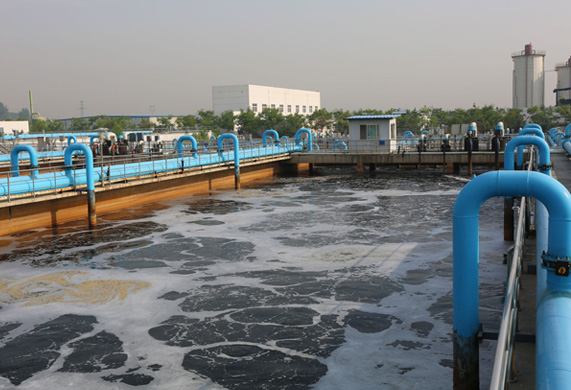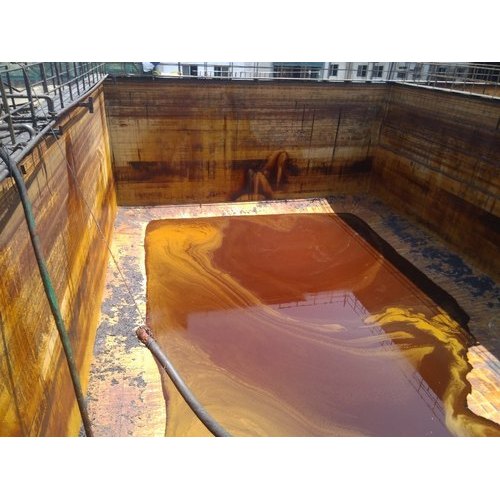Wastewater treatment plays a vital role in maintaining the cleanliness of our environment and preserving the quality of water resources. One essential component of wastewater treatment systems is the Sewage Treatment Plant (STP) tank. STP tanks are responsible for the primary treatment of wastewater, removing solid and organic matter before further processing. However, over time, these tanks can accumulate sludge and debris, leading to reduced efficiency and potential environmental hazards. In this article, we will delve into the world of STP tank cleaning, exploring its importance, process, and benefits for ensuring optimal functioning of wastewater treatment systems.
What is STP Tank Cleaning?
STP tank cleaning refers to the process of removing accumulated sludge, solids, and debris from Sewage Treatment Plant tanks. Over time, organic matter, such as fecal matter, grease, and oil, along with inorganic solids, settle at the bottom of the tank, forming a layer of sludge. This sludge buildup can obstruct the proper functioning of the STP tank, leading to decreased treatment efficiency and potential system failures.
Call ~ 7447474074 ~ To Book your Service. Best Service @ Affordable Cost Assured.
Why is STP Tank Cleaning Essential?
STP tank cleaning is crucial for maintaining the efficiency and longevity of wastewater treatment systems. Neglecting regular cleaning and maintenance can have severe consequences, including:
1. Reduced Treatment Efficiency: Accumulated sludge in the STP tank can reduce the available capacity for wastewater treatment, leading to inadequate treatment and lower quality effluent.
2. System Failures: Excessive sludge can cause blockages in pipes, pumps, and valves, resulting in system failures and costly repairs. 3. Environmental Hazards: If not properly maintained, STP tanks can become breeding grounds for harmful bacteria, pathogens, and foul odors. This can pose health risks to workers and nearby communities, as well as contaminate water bodies when untreated effluent is discharged.
3. Environmental Hazards: If not properly maintained, STP tanks can become breeding grounds for harmful bacteria, pathogens, and foul odors. This can pose health risks to workers and nearby communities, as well as contaminate water bodies when untreated effluent is discharged.
To prevent these issues, regular STP tank cleaning is necessary to ensure optimal performance and compliance with environmental regulations.
The STP Tank Cleaning Process
Cleaning an STP tank involves a systematic approach to remove accumulated sludge and debris effectively. The process typically includes the following steps:
1. Pre-Cleaning Assessment and Planning Before initiating the cleaning process, a thorough assessment of the STP tank’s condition is conducted. This assessment helps determine the extent of sludge accumulation, identify potential hazards, and plan the appropriate cleaning methods and equipment required.
2. Sludge Removal The first step in the actual cleaning process involves removing the sludge from the tank. This can be done using various techniques, including:
- Mechanical Sludge Removal: In this method, specialized equipment like suction pumps or vacuum trucks is used to extract the sludge from the tank. The sludge is then transported for proper disposal or further treatment.
- Dredging: In cases where sludge accumulation is substantial, dredging may be necessary. Dredging involves using mechanical equipment to scoop out large volumes of sludge from the tank.
- Biological Treatment: Some cleaning processes may incorporate the use of bacteria or enzymes that facilitate the breakdown of organic matter, aiding in sludge removal.
3. High-Pressure Cleaning
Once the majority of the sludge has been removed, high-pressure water jets are used to clean the tank’s walls, floors, and other internal surfaces. This helps eliminate residual solids and ensures a thorough cleaning.
4. Inspection and Maintenance
After the cleaning process, a detailed inspection of the tank is conducted to identify any structural damage, leaks, or issues that require maintenance or repairs. This step is crucial for maintaining the long-term integrity of the STP tank.
5. Disposal and Treatment of Sludge
The collected sludge is disposed of following appropriate waste management protocols. Depending on the composition of the sludge, it may undergo further treatment, such as dewatering or composting, before final disposal.
Benefits of STP Tank Cleaning
Regular STP tank cleaning offers several benefits, including:
- Improved Treatment Efficiency: Cleaning removes sludge and debris that can hinder the STP tank’s capacity to treat wastewater effectively. This results in improved treatment efficiency and higher-quality effluent.
- Prevention of System Failures: Cleaning helps prevent blockages in pipes, pumps, and valves, reducing the risk of system failures and minimizing costly repairs.
- Compliance with Regulations: Regular tank cleaning ensures adherence to environmental regulations and standards for wastewater treatment, preventing potential legal issues and penalties.
- Enhanced Operational Lifespan: Proper maintenance, including regular cleaning, can extend the operational lifespan of the STP tank, reducing the need for premature replacements and significant capital investments.
FAQs about STP Tank Cleaning
1. How frequently should STP tanks be cleaned?
The frequency of STP tank cleaning depends on various factors such as tank size, influent characteristics, and operational conditions. In general, it is recommended to clean STP tanks at least once a year. However, tanks experiencing high sludge accumulation or operating under challenging conditions may require more frequent cleaning.
2. Can STP tank cleaning be done while the plant is operational?
Yes, it is possible to perform STP tank cleaning while the plant is operational. Professional cleaning services employ techniques and equipment that allow for cleaning without disrupting the plant’s operations. This ensures continuous treatment while maintaining cleanliness and efficiency.
3. Are there any health risks associated with STP tank cleaning?
STP tank cleaning can involve potential health risks due to the presence of harmful bacteria, pathogens, and toxic gases. It is essential to follow appropriate safety protocols and hire experienced professionals who use proper protective gear and adhere to occupational health and safety guidelines.
4. What are the consequences of not cleaning STP tanks regularly?
Neglecting regular STP tank cleaning can lead to reduced treatment efficiency, system failures, and environmental hazards. Sludge accumulation can cause blockages, resulting in untreated or inadequately treated effluent being discharged, leading to water pollution and potential health risks.
5. How can I find reliable STP tank cleaning services?
To find reliable STP tank cleaning services, consider factors such as their experience, reputation, certifications, and compliance with environmental regulations. Seek recommendations from other wastewater treatment professionals or conduct thorough research to ensure you choose a reputable service provider.
6. Can I clean an STP tank myself?
Cleaning an STP tank requires specialized equipment, expertise, and adherence to safety guidelines. It is highly recommended to hire professional cleaning services with experience in STP tank cleaning. Attempting to clean the tank without proper knowledge and equipment can be dangerous and may lead to ineffective cleaning or potential accidents.
STP tank cleaning is a vital maintenance practice for wastewater treatment systems. By regularly removing sludge and debris from STP tanks, the overall efficiency and reliability of the treatment process can be significantly enhanced. The benefits of STP tank cleaning extend beyond improved treatment efficiency and include prevention of system failures, compliance with regulations, and prolonging the operational lifespan of the tanks. To ensure optimal cleaning results and minimize health and environmental risks, it is crucial to engage professional STP tank cleaning services. Remember, by prioritizing STP tank cleaning, we contribute to a cleaner and healthier environment for generations to come.
Deep Cleaning Services in Navi Mumbai ~ Water Tank Cleaning in Navi Mumbai ~ Pest Control Services in Navi Mumbai ~ Septic Tank Cleaning in Navi Mumbai ~ Drainage line cleaning in Navi Mumbai ~ Housekeeping Services in Navi Mumbai ~ Well Cleaning in Navi Mumbai ~ STP Operation Services in Navi Mumbai ~ STP Maintenance Services in Navi Mumbai ~ STP Setup Services in Navi Mumbai ~ STP Installation Services in Navi Mumbai ~ STP Cleaning Services in Navi Mumbai ~ Ground Terrace Cleaning Services in Navi Mumbai ~ Ground Cleaning Services in Navi Mumbai ~ Terrace Cleaning Services in Navi Mumbai ~ Construction Waste Disposal in Navi Mumbai ~ Post Construction Cleaning Services in Navi Mumbai ~ Post Renovation Cleaning Services in Navi Mumbai




